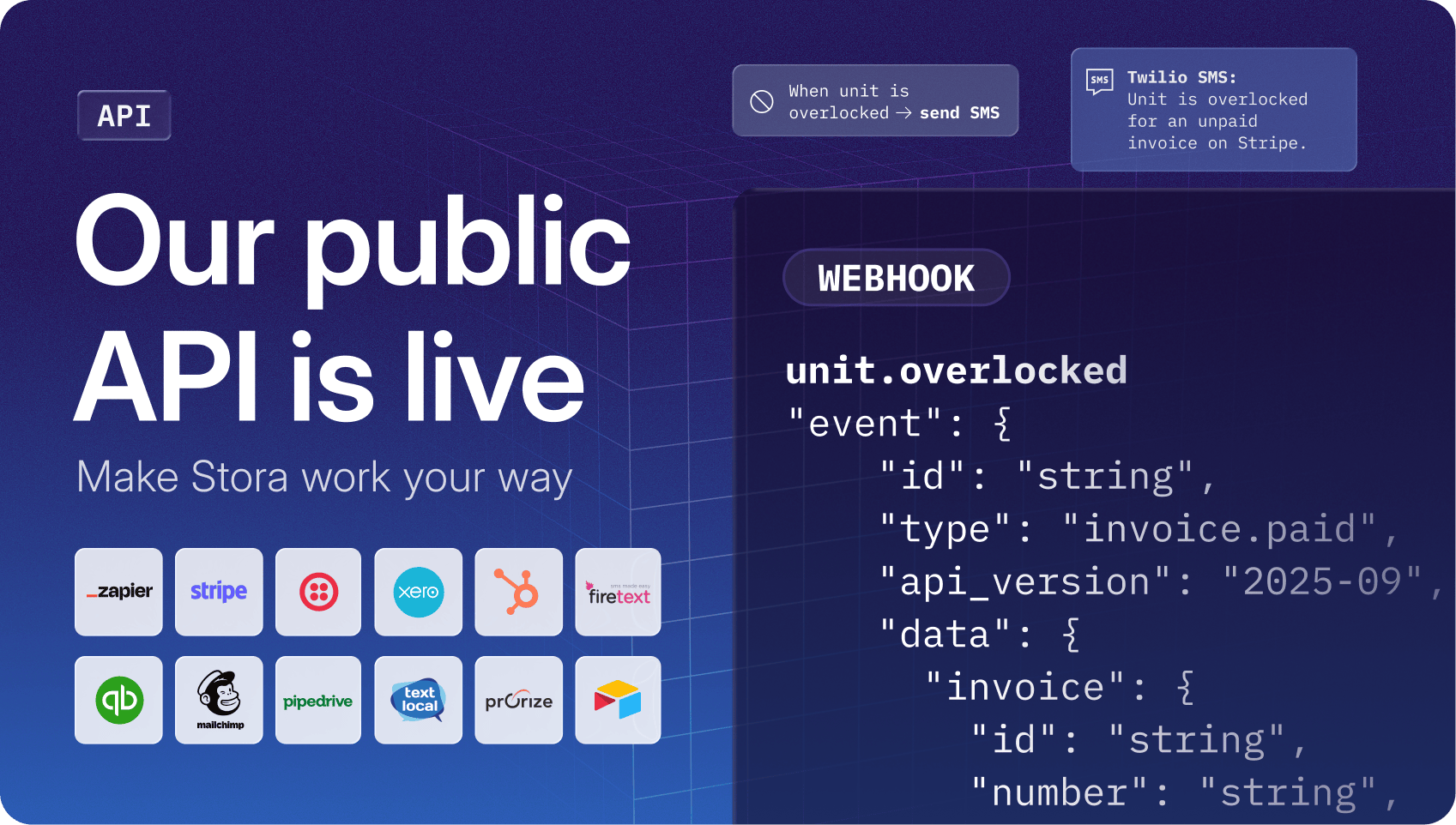On average, renting a 50 square foot self storage unit in the UK costs around £95 per month. In the U.S., the average rental price for similar units has dropped somewhat, from around $99 in 2023 down to about $75 per month in 2025.
This decline highlights just how competitive the self storage market has become, with more facilities adjusting their prices to keep up with shifting customer demand.
Understanding what your competitors charge and how the market is evolving is important for any self storage business looking to stand out.
In this article, we’ll explain why monitoring competitor pricing matters, what you can do with this data, and how to differentiate your facility from others nearby.
Why Tracking Competitor Pricing Matters
Understanding what your competitors charge for their storage units is the foundation of smarter pricing. It also helps with stronger sales conversions and long-term profitability.
Below, we’ll discuss three important reasons why tracking competitor pricing matters:
Set a market benchmark
When you collect competitor prices across unit sizes, amenities, and promotions, you create a map of the local self storage market. That map tells you where the gaps and clusters are and lets you decide how you want to position your facility.
For example, a 10×10 unit rents for approximately $79 per month on average, while climate-controlled versions cost about $83 per month.
There are three steps you can take to do this:
1. Build a simple price matrix: Capture prices for the most common unit sizes, climate-controlled vs non-climate-controlled units, drive-up vs interior, and any promotional rates. Plot those into three budget bands: budget, mid-market, and premium.
2. Decide where you want to do business: If most of your competitors sit in the budget band, there’s room to differentiate with a premium offer. This could include cleaner units, better security, packaging supplies, and extended access. If you choose a budget option, you’ll need efficient operations to make thin margins work.
3. Use a relative pricing strategy: Benchmarks help you position a unit as best value, like slightly more features for a small premium, rather than simply the cheapest option. Customers respond to perceived value.
Imagine you track prices for five competitors within a five-mile radius and discover they all charge between $90 to $95 for a 10x10 non-climate-controlled unit. You decide to charge $110, but include 24/7 access and climate control.
Your higher price places you in the premium band, but the extras make it easy for new customers to see value.
Equip your sales team to handle price objections and explain value
Data about your competitors’ pricing only helps if your team can turn it into confident conversions. It helps you to give your sales team the tools they need so that price objections become opportunities to show value.
Below are some ways you can help your salespeople with this:
Create a one-page value card: Each representative can use this to sell top differentiators, common competitor tactics, and quick responses. Keep it bulleted and specific and include unique selling propositions (USPs) like 24/7 access or free insurance for the first month.
Train them on flexible offers: Give your sales team tactics they can use so they don’t have to reduce your pricing to secure customers. This could be a first-month discount, free lock, or bundled packing supplies.
Let’s say a customer calls and says, “The place down the road is $15 cheaper per month. Your sales representative responds, “I understand the price is important. May I ask how often you’ll need access?”
When the prospect says evenings and weekends, your sales representative could explain that you’re the only facility in town with 24/7 access, which is why many customers happily pay a bit more.
Avoid the price war trap
Reacting to every competitor cut can start a race to the bottom. Price wars reduce margins and damage your service quality. They also make it challenging to invest in things that build loyalty, such as upgrading facility security or improving your customer service.
What Is a Price War in Self Storage? A price war happens when competing businesses repeatedly lower their prices to undercut each other in the fight to attract customers. Each reduction triggers another, driving prices and profit margins lower and lower. While customers may enjoy short-term savings, price wars make it impossible for any competitor to maintain quality, invest in improvements, or stay profitable. |
Repeated small cuts add up. Lower prices result in lower net revenue. This puts pressure on you to cut maintenance, staffing, or marketing. This leads to a poor customer experience and potentially higher churn. Over time, you’ve sacrificed stability for short-term occupancy lift.
It’s a good idea to keep an eye on key financial signals like:
Gross margin per occupied unit.
Average revenue per occupied unit.
Customer acquisition cost (CAC).
Lifetime value (LTV).
Here are some alternatives to matching every price cut:
Use targeted, limited-time promotions. For example, a move-in discount for the first month only, rather than permanent rate reductions.
Offer non-price incentives, like a free moving truck for a weekend, one month of tenant insurance, and loyalty credits.
Improve perceived value through cleanliness, security, flexible terms, or a better digital experience.
It’s also important to avoid reacting to every change. For example, only consider matching or adjusting your pricing when a nearby competitor permanently lowers rates for more than 30 days, or when your occupancy drops below a threshold.
Let’s say you notice a nearby competitor drops their 5x10 units to $50 per month. Instead of matching this price, you keep yours steady but run a free first-month promotion for new customers.
You’ll likely fill your storage units quickly, and your average monthly rate stays intact after the first month. You also avoid permanently lowering your market price.
How Self Storage Operators Can Gather Competitor Pricing Information
Source
Tracking competitor pricing doesn’t have to be complicated, but you do need to do it consistently. Here are some ideas on how you can gather intel on competitor pricing:
Check competitor websites and online listings
In the storage industry, many competitors post their self storage rental rates online, making this the fastest way to start gathering data.
By regularly visiting competitor websites, you can see their current prices for common unit types and sizes and any added fees.
Google Business Profiles and aggregator sites such as SpareFoot or Storage.com can also provide insights. They often show availability with rates.
Let’s say you’re a self storage provider in East Point, Georgia. You can use the Public Storage aggregator website to view the prices of storage units in your area:
Promotions like “first month free” or “half off for three months” can impact how potential customers perceive self storage pricing, so it’s worth recording these details.
Keeping a spreadsheet and updating it regularly helps self storage owners maintain a clear and accurate view of the market.
For example, you might come across a self storage facility like this that advertises its prices and promotions on its website:
Use secret shopper tactics
Some pricing details aren’t visible online, which is why secret shopping can be valuable. Calling, emailing, or visiting a storage facility as a potential customer can reveal unpublished rates, limited-time promotions, and details about their sales process.
This approach enables you to see how staff justify their pricing, the quality of their customer service, and the condition of their units.
Asking about move-in specials, extra fees, or required insurance can provide insights that influence how you position your own self storage facility.
Monitor competitor promotions on social media
Many facilities promote special offers on platforms like Facebook, Instagram, and local community pages.
By following your competitors online, you can see when they run discounts, flash sales, or seasonal offers and whether these align with peak moving seasons.
Monitoring these posts over time helps you anticipate competitor activity and plan your promotions accordingly.
For example, you might see a competitor like this self storage facility, which is offering 50% off selected units on a local Facebook group:
Use price-tracking software
For self storage owners managing multiple properties or competing in busy markets, manually tracking storage rental rates can be time-consuming.
Price monitoring software or property management systems can automate the process for you. These tools can alert you to changes in self storage pricing and help you identify patterns, such as the unit sizes that are discounted most often or the times of year when promotions are most frequent.
Ask your customers and leads
Your existing customers and leads can be a great source of information. Many of them come to you after they’ve compared several facilities before making a decision.
For this reason, they may already know what other self storage facilities are charging.
Training your sales team to ask prospects about their research can provide valuable competitive insights. Even existing tenants can share details about offers they’ve seen from nearby facilities, especially if you provide an incentive like a small account credit.
Track price over time
Competitor pricing changes throughout the year, which means tracking it only once gives you an incomplete picture.
By monitoring rates regularly, you can identify seasonal patterns, such as increases during summer or special deals in slower months.
Recording how long promotions last and whether they repeat annually will help you anticipate changes and respond strategically.
Tips for Analysing and Interpreting Competitor Pricing Data
Now that you’ve gathered your pricing information from your competitors, here are some expert tips to analyse and interpret your data:
Track base pricing, specials, and trends
In the self storage industry, it’s essential to monitor standard rental rates as well as move-in specials or promotions that your competitors run.
Pay attention to how frequently they implement existing tenant rent increases and look at broader market trends.
Understanding these patterns helps your self storage business anticipate seasonal shifts and customer demand fluctuations.
Identify pricing tactics and strategies
Determine if your competitors are using dynamic pricing, which is adjusting rates in real-time based on occupancy and demand, or if they stick to static offers and periodic move-in specials.
Recognising these pricing strategies allows your storage business to adopt value-based pricing or value pricing approaches that can create a competitive advantage.
What Is Value-Based and Value Pricing in Self Storage? Value-based pricing in self storage means setting your rental rates not just based on costs and competitor prices, but primarily on the value your facility provides to your customers. Value pricing involves creating tiered offerings, such as basic or premium units, that match different customer needs and budgets. Using value-based and value pricing strategies helps self storage owners differentiate their facilities from competitors. |
Compare unit types and features
analyse how your competitors price different unit categories, such as climate-controlled spaces, drive-up access, or smart lock-enabled units.
These features often justify premium pricing and are a key consideration when positioning your facility to capture more value from customers.
Evaluate location and convenience factors
Location is another important consideration when it comes to self storage pricing. Comparing how nearby facilities position themselves relative to residential areas or business districts and the convenience they offer can inform your pricing strategy.
Analyse occupancy levels and customer demand
Tracking occupancy trends across the market helps you identify which unit sizes and features are in the highest demand.
This insight enables your storage business to fine-tune pricing to maximise revenue while balancing occupancy, a core part of value-based pricing.
How to Stand Out Beyond Pricing
You now know what your competitors are charging and how you can remain competitive based on this data. But how do you ensure your facility stands out beyond this? Here are three ways to differentiate yourself from other nearby facilities:
Focus on service excellence
Standing out in the self storage industry means doing more than offering low prices. Providing exceptional service is key.
This means delivering fast, hassle-free gate access through smart access systems and having friendly, knowledgeable staff to assist your tenants.
Maintain your facility’s appearance
A clean, well-maintained storage facility makes a strong impression on your tenants. Features like spotless units, tidy grounds, and flood-resistant storage spaces help protect customers’ belongings and build trust.
Develop and communicate USPs
Identify three clear USPs that highlight your facility’s advantages. Examples might include:
Industry-leading flood-resistant units.
Ultra-fast 24/7 gate access.
Consistently superior cleanliness.
Promote these USPs across your website, marketing materials, and sales conversations to communicate why customers should choose you over competitors.
The Best Self Storage Tool for Strategic Pricing Support
Understanding your competitors’ pricing is essential, but it’s only part of what you should be focusing on. Combining thorough market research with strong value propositions and exceptional service helps you build long-term success.
By analysing competitor data and differentiating your facility beyond price, you position your business to attract loyal customers and protect your profitability.
Stora’s strategic pricing support lets you experiment with storefront pricing, helping you discover which rates resonate with our market.
You can also bill customers in whatever increments suit your model, giving you full flexibility and control.
Our tool allows you to tailor your pricing strategies so that they align with your unique offerings and local demand.
Feel free to book a Stora demo today to find out how our software can help you differentiate your facility in a crowded market.








